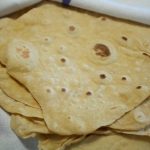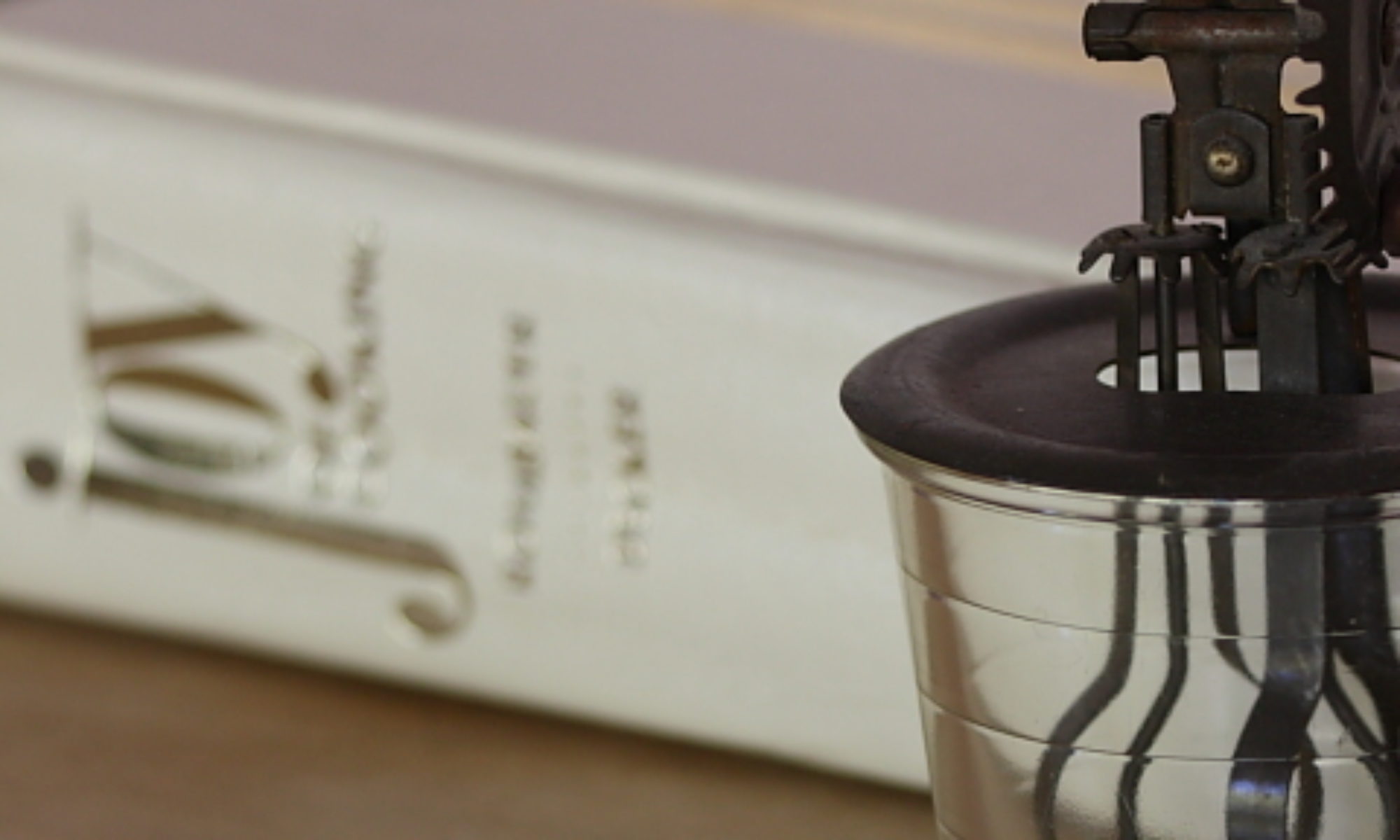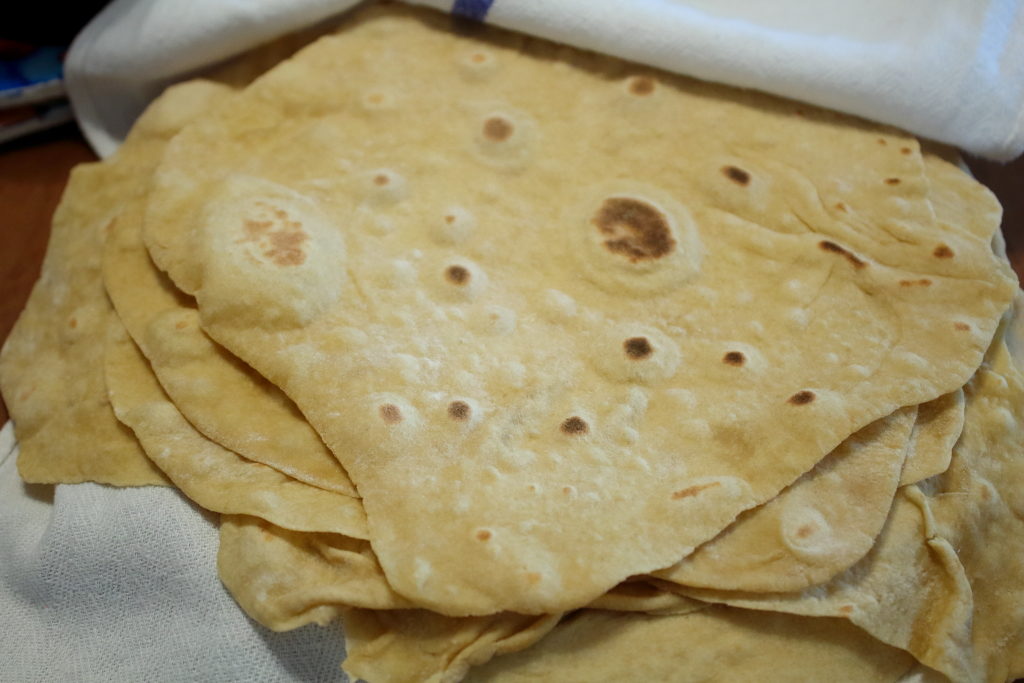
So, are you one of those people who began baking with a sourdough starter? We’ve read that many people are these days, and that’s a good thing. Making bread from three simple ingredients: flour, salt, water, and a couple of more complex ingredients: time and patience, is just amazing. I like to refer to making bread as the miracle of the prehistoric age. Every time I make sourdough bread (basically once a week for, oh, probably the past ten years), I’m amazed that something that good can come from just three ingredients. Of course, everything has a downside. With sourdough, you need to keep the starter thriving through regular feedings. Week in and week out. Even if you don’t want to or need to bake a lot of bread that week. Over the years, we’ve come up with ways to use that excess starter during the weeks when we don’t want to make three large boules of bread, and today’s post is a new one.
Now, this recipe comes from Lavash, by Kate Leahy, John Lee, and Ara Zara, a nice-looking cookbook filled with recipes from Armenia. Well, it comes from there, sort of, since we modified their recipe to use sourdough starter, and whole wheat flour, and make half the amount. (There was a recipe for whole wheat lavash that we didn’t use. Why? We just didn’t). Don’t worry; you can make these lavash without a starter, too, and we’ll explain more below.
Now, we’re not sure about you, but we’ve never had Armenian food — at least we don’t think we’ve had it — heck, we didn’t even know that lavash was eaten in Armenia. All we can say is that there are an awfully lot of things we still have to learn.
Whole Wheat Sourdough Lavash
Ingredients
- 70 g sourdough starter (see note)
- 120 g water (1/2 cup)
- 8 g oil (1/2 Tbs)
- 1 tsp kosher salt
- 220 g white whole wheat flour (1 1/2 cups + 1 Tbs)
Instructions
- Place starter in the bowl of a stand mixer and allow to warm to room temperature and start bubbling, about 1 hour.
- Add water, oil, and salt, and mix until soupy.
- Add about 1/3 the flour, attach the paddle attachment, and beat on medium-low until smooth, about 1 minute.
- Add remaining flour, attach dough hook, and mix on medium-low until combined.
- Remove bowl from mixer and cover. Let rest for 20 minutes.
- Place bowl back on mixer with the dough hook, and knead on medium speed for 4 minutes.
- Remove from mixer, knead dough a few times by hand, then coat with oil and return back to the bowl. Cover and let rise until soft, about 2-3 hours.
- Divide dough into 8 pieces, shaping each into a ball.
- Heat a griddle over medium heat.
- Meanwhile, roll a ball of dough very thin and into a round about 9 inches in diameter.
- Place on hot griddle and cook until puffed in spots, and browned in spots on the bottom, about 60 seconds. Flip and cook for about 30 seconds more. Adjust heat of the griddle as necessary.
- Cover lavash with a clean dish towel, while you roll and cook the remaining lavash.
- Serve immediately.
Notes
Ingredient discussion:
Don’t have sourdough starter? No worries, simply mix together 35 g of flour (1/4 cup) with 35 g of lukewarm water (2 Tbs + 1 tsp) and 1/4 tsp dried yeast. Let stand for a couple of hours until nice and bubbly. In fact, this is what the original recipe called for. For the white whole wheat flour, we used freshly-ground Khorosan wheat, but, white whole wheat flour should be fine. Don’t have that? Try a 50/50 mix of whole wheat and all-purpose. No whole wheat at all? Use all-purpose. You’ll be back to exactly the recipe for lavash from which we started.
Procedure in detail:
Warm sourdough starter. Get out your sourdough starter stash and scoop out 70 grams into the bowl of a stand mixer. We figure that, if you have a sourdough starter, you’ll have a scale; otherwise, just do the best you can, scooping out 1/4 cup or so. Let the sourdough starter come to room temperature and revive a bit. If you don’t have sourdough starter, mix together 35 grams of flour and 35 grams of lukewarm water, stir in 1/4 teaspoon of dried yeast, and let stand until nice and bubbly, about 1-2 hours, depending on how warm the water was.

Mix in liquids. Add the water, oil, and salt — yeah, we know salt isn’t a liquid, but salty water is — and swish the starter around to break it up. We used the paddle attachment of the mixer, then placed the bowl on the mixer and attached the paddle in preparation for the next step.
Beat in some flour. Add about 1/3 of the flour and beat on medium low until well mixed, about 1 minute. This will make sure the sourdough starter is completely broken up and dissolved into the mix. No lumps of unmixed sourdough starter for us.
Mix in remaining flour. Add the remaining flour and switch to the dough hook. Turn the mixer to medium low and mix until the flour is incorporated and you have a dough. It might still be a bit sticky; that’s okay.

Let flour hydrate. Give the flour time to absorb the water. This will allow the bran to soften and make it easier to develop the gluten when you knead the dough. We removed the dough hook, set it in the bowl with the dough, placed a plate over the top, and let it rest for 20 minutes. That’s it.

Knead dough. With the dough hook still attached, start kneading the dough on medium speed until it cleans the side of the bowl and looks smooth and supple, about 4 minutes. After that, we like to knead it a few times by hand, then oil the bottom of the bowl, and rub the dough into the oil to coat, deftly flipping the dough over to rest in the oil.
Let rise. Cover the bowl and let the dough rise until about doubled, 2-3 hours with sourdough starter, less time with yeast. If you want the dough to rise more slowly (more flavor and you have the time), you can let it rise in the refrigerator. Just bring it out to warm a couple of hours before cooking up your lavash.

Portion dough. We use a dough scraper to cut our dough in half, then cut each of those in half, and do that once more to form eight roughly equal portions of dough. Once you have that, roll each into a ball and set aside.
Heat griddle. Place a cast iron griddle over medium heat and let it become nice and hot. The original recipe suggested that a drop of water should evaporate instantly when it hits the griddle. We didn’t check, but, over the years, we’ve learned how hot our griddle gets on our stove. Your first lavash or two might not be perfect, but, they’ll be good, anyway.

Roll out dough. Lightly flour a clean work surface and roll out the dough into a 8- to 9-inch round. Don’t worry if it’s misshapen; all of ours were, and yet they tasted fine. And, really, lavash is supposed to be a rectangle, but, without a rectangular griddle, that’s not going to happen around our house, so misshapen circles are perfect. We find it a bit easier to pre-roll all the balls of dough about half way, then finish rolling them out right before cooking. If you work quickly, they won’t dry out as the partially rolled out dough sits.

Cook lavash. Once you’ve rolled out a piece of dough, place it on the griddle and cook for about 60 seconds. You don’t have to worry about oiling the griddle; the bread won’t stick. You do want the lavash to start puffing up in spots, and, when you check the underside, you want some nice browned spots. If it’s browning in less than 60 seconds, turn down the heat. Similarly, if it takes much more than 60 seconds, increase the heat. Once one side is done, flip the lavash and cook for about 30 seconds. As your lavash finish cooking, wrap them in a clean dish towel to keep warm and prevent drying out. Once you get a lavash or two done, you’ll find that you can roll out the next piece of dough while a lavash is cooking.
Serve immediately. For serving, we leave the lavash set on a plate wrapped in a towel so they stay warm and don’t dry out. Being so thin, lavash will dry out in a few minutes, and no one really likes dried out bread.
These turned out surprisingly well. We were worried a bit because the dough didn’t seem to want to rise, and we were getting closer and closer to dinner time. Rather than wait, or despair, we simply went ahead and made our lavash. They turned out perfectly, soft, a bit chewy, nice and warm, and with a slight sourdough tang. We especially liked having the whole wheat flour for extra flavor. Now, we know that you might not be able to get Khorasan wheat flour, but, we think these will be great no matter what kind of flour you use. After all, who doesn’t like fresh warm bread? Fives!



